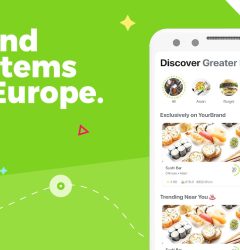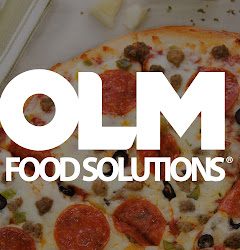13 Nov

In a world where time is a precious commodity, Uber Eats has become the unsung hero of the food delivery scene.A subsidiary of the globally recognized Uber Technologies, Uber Eats has not only simplified the process of ordering food but has also crafted a business model that sets it apart. Let’s delve into the intricacies of how Uber Eats operates and what distinguishes its approach.
The Basics of Uber Eats
1. Platform Concept
Uber Eats operates as an on-demand food delivery platform. It connects users with a wide array of local restaurants, allowing them to browse menus, place orders, and have their favorite dishes delivered to their doorstep. The platform acts as an intermediary, facilitating a seamless transaction between customers and restaurants.
2.User-Friendly Interface
The success of Uber Eats can be attributed, in part, to its intuitive mobile app and user-friendly website. Customers can easily navigate through the app, browse restaurant options based on their location, view menus, and place orders with just a few taps. This simplicity contributes to a positive user experience, encouraging customer retention.
3.Real-Time Tracking
Transparency is key in the on-demand service industry. Uber Eats provides real-time tracking of orders, allowing users to monitor the status of their delivery from the moment it’s confirmed to the minute it arrives at their doorstep. This feature not only enhances the customer experience but also builds trust in the reliability of the service.
The Unique Aspects of Uber Eats’ Business Model
Diversified Revenue Streams
Uber Eats has strategically diversified its revenue streams. In addition to earning a percentage of each transaction from restaurants, the platform charges customers a delivery fee. Furthermore, Uber Eats often partners with restaurants to create exclusive deals and promotions, fostering customer engagement and increasing order frequency.
Data-Driven Decision Making
One of the strengths of Uber Eats lies in its data-centric approach. The platform collects and analyzes vast amounts of data on user preferences, delivery times, and popular cuisines. This data-driven decision-making process enables Uber Eats to optimize its operations, enhance the customer experience, and tailor promotions to individual users.
Optimized Logistics
Uber Eats leverages the existing infrastructure of Uber’s ride-sharing platform, allowing for efficient and cost-effective logistics. The extensive network of Uber drivers also serves as a pool of potential couriers for food delivery. This integration minimizes operational costs and enables Uber Eats to offer competitive pricing to both customers and restaurant partners.
Strategic Partnerships
Collaborations with restaurants, fast-food chains, and even grocery stores contribute to Uber Eats’ success. By expanding its range of offerings, the platform attracts a broader customer base and provides users with more choices. These strategic partnerships also play a crucial role in creating exclusive promotions and discounts, fostering customer loyalty.
Delivery Network
Uber Eats employs a fleet of independent couriers who deliver food. These couriers are paid per delivery, offering them flexible work opportunities. Efficient Logistics: The platform’s logistics system is designed to minimize delivery times and maximize courier efficiency.
Dynamic Pricing Strategy
Similar to Uber’s ride-hailing service, Uber Eats implements surge pricing during high-demand periods, adjusting delivery fees based on real-time market conditions.
Marketing and Branding Promotions and Discounts
Uber Eats frequently offers promotions and discounts to attract new customers and retain existing ones.
Strong Brand Identity
The Uber brand’s strength and global recognition contribute significantly to the success of Uber Eats. Challenges and Adaptations Despite its success, Uber Eats faces challenges like competition, regulatory hurdles, and the need to constantly innovate. The company has shown adaptability, for instance, by expanding into grocery and convenience item deliveries during the COVID-19 pandemic.
Launch Your Own marketplace with Zeew
For entrepreneurs and businesses aspiring to replicate the success of Uber Eats, Zeew offers an innovative and efficient solution. Zeew, a leading licensing company in Europe, provides a robust platform that enables clients to create their own marketplace for delivery services. Here’s how Zeew makes this possible:
1. User-Friendly Platform No Coding Required
Zeew offers a platform that is easy to use and requires no coding skills. This feature allows business owners to focus on their business model and operations without worrying about technical complexities. Customizable Solutions: The platform is highly customizable, allowing businesses to tailor the user interface and functionalities to suit their specific needs and brand identity.
2. Seamless Integration Integration with Existing Systems
Zeew’s platform can be seamlessly integrated with existing business systems, ensuring a smooth transition and continuity of operations. Diverse Payment Options: The platform supports a variety of payment methods, making it convenient for customers to transact.
3. Scalability and Flexibility Scalable Infrastructure
Zeew’s platform is designed to scale with the growth of your business, ensuring that it can handle increased demand and expansion into new markets. Adaptability: The platform is adaptable to various business models, whether you’re targeting food delivery like Uber Eats or branching out into other delivery services.
4. Marketing and Analytics Tools Built-in Marketing Tools
Zeew provides built-in marketing tools to help promote your marketplace, attract customers, and retain them through various strategies. Analytics for Informed Decisions: The platform includes analytics features that provide valuable insights into customer behavior, order trends, and operational efficiency.
5. Support and Maintenance Continuous Support
Zeew offers ongoing support to ensure that your marketplace operates smoothly and any issues are promptly addressed. Regular Updates: The platform is regularly updated with new features and improvements, keeping your marketplace at the forefront of technology and market trends.
Conclusion
Launching a marketplace similar to Uber Eats is a complex endeavor, but Zeew simplifies this process with its comprehensive, user-friendly, and scalable platform. By leveraging Zeew’s technology and expertise, clients can efficiently establish and grow their own delivery service marketplace, capitalizing on the booming demand in this sector.
For more information on how Zeew can help you launch and grow your marketplace, visit Zeew’s website. Whether you’re a startup or an established business, Zeew provides the tools and support needed to navigate the competitive landscape of online delivery services successfully.








